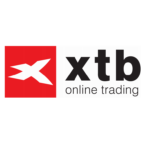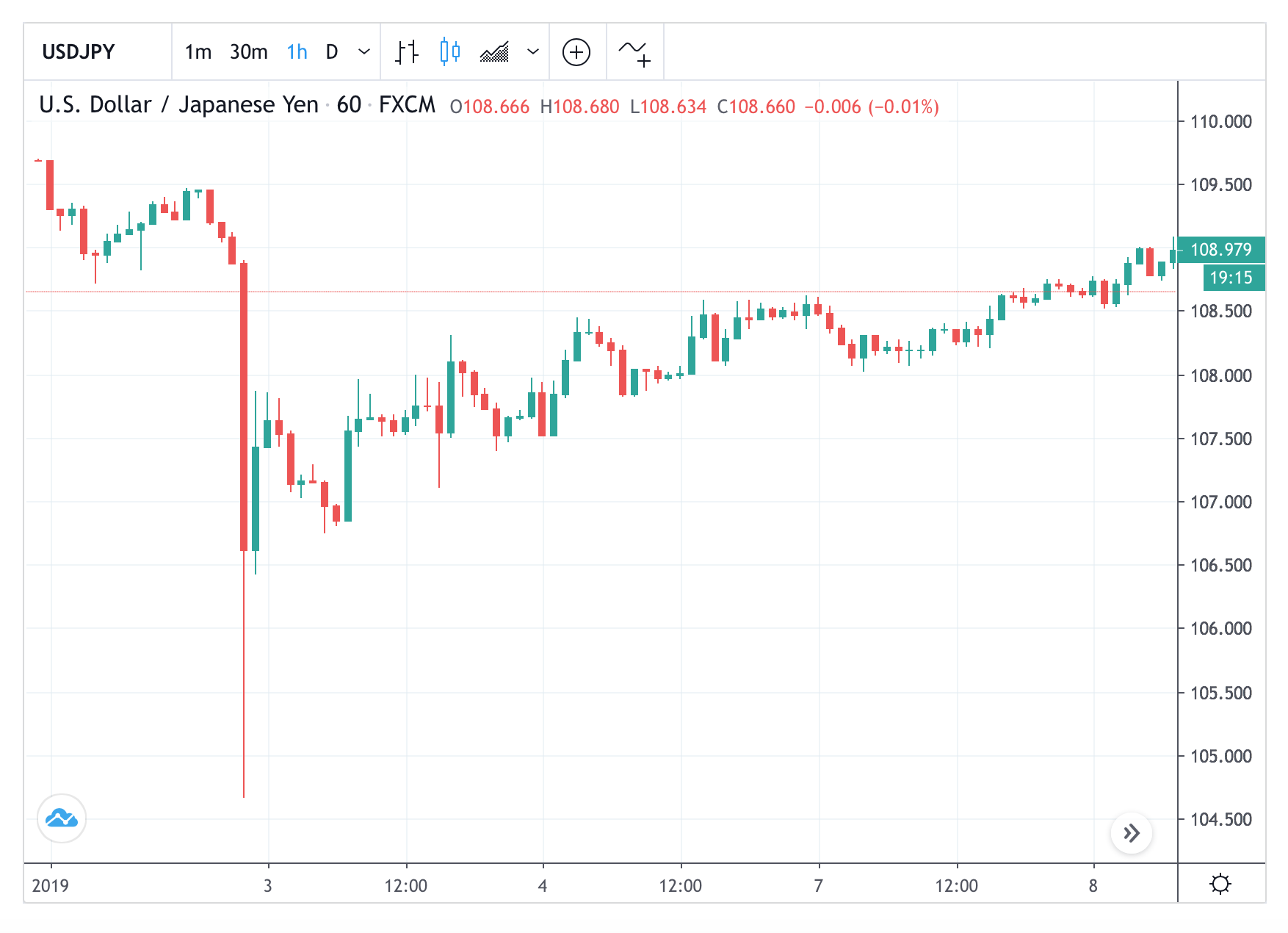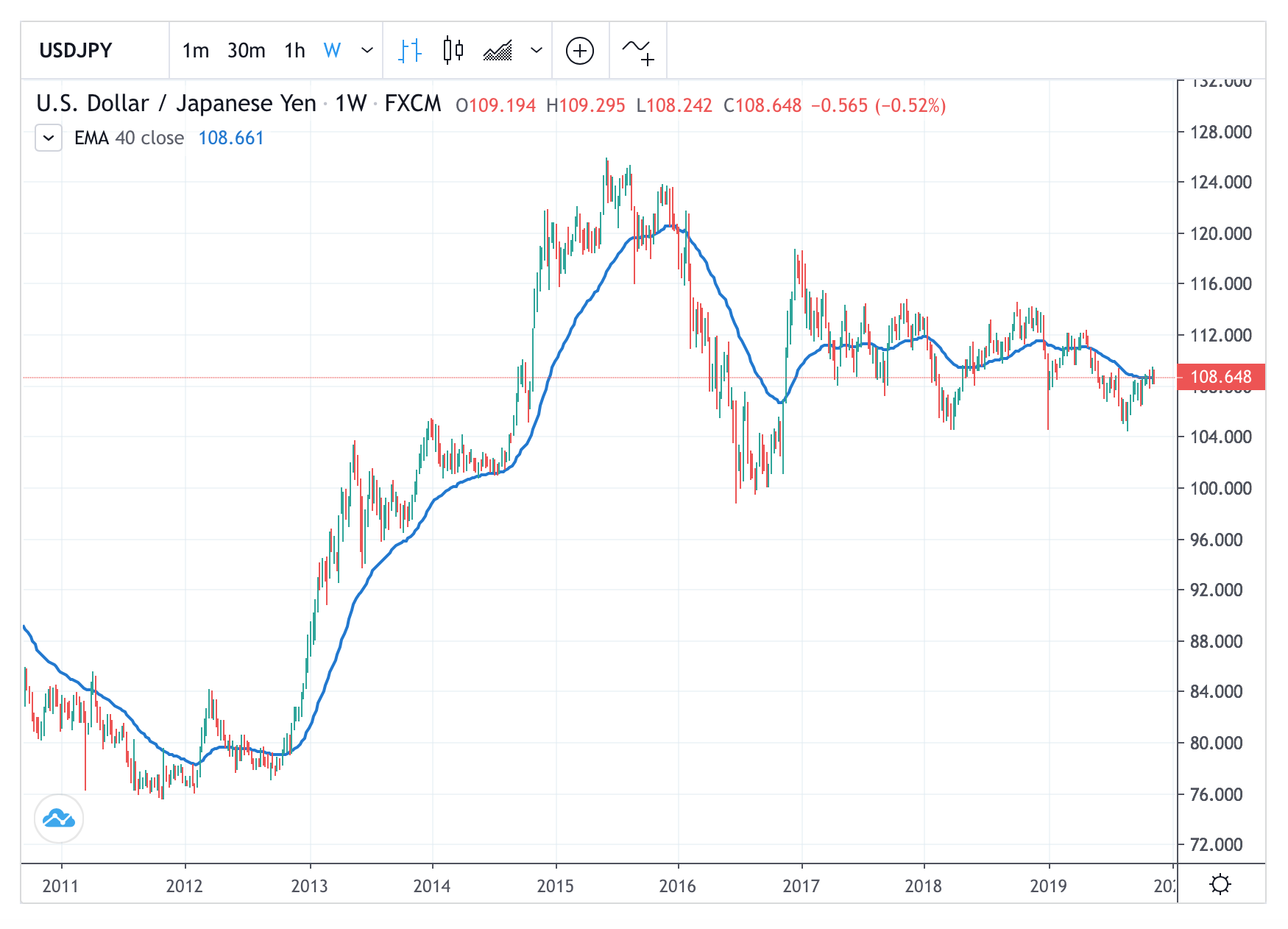USDJPY trading platforms let you speculate on the strength of the US Dollar versus the Japanese Yen through spot FX, CFDs, financial spread betting or futures & options. We have compared and reviewed what we think are the best USDJPY trading platforms. You can use our USDJPY comparison table to rank brokers by how much commission they charge and what it costs to hold a USDJPY position overnight. You can also see which USDJPY trading platforms let you trade via CFDs, spread betting, have DMA access through futures and options and what the minimum deposit is for each account.
City Index: Best broker for USDJPY CFD trading
- Costs & spreads: 0.9
- Minimum deposit: £100
- Overnight financing: 2.5% +/- SOFR
- Account types: CFDs & spread betting
69% of retail investor accounts lose money when trading CFDs with this provider
Pepperstone: Automated USDJPY trading on MT4
- Costs & spreads: 0.4
- Minimum deposit: £1
- Overnight financing: (1/FX Rate) * (Trade Size*Tom Next )
- Account types: CFDs & spread betting
75.3% of retail investor accounts lose money when trading CFDs with this provider
Spreadex: USDJPY trading with personal service
- Costs & spreads: 0.9
- Minimum deposit: £1
- Overnight financing: Tom/Next +0.8%
- Account types: CFDs & spread betting
72% of retail investor accounts lose money when trading CFDs with this provider
Interactive Brokers: Discount USDJPY trading & conversions
- Costs & spreads: 0.0008%
- Minimum deposit: $2,000
- Overnight financing: -3.188% / -1.188% (BM -/+ 1%)
- Account types: CFDs, DMA, futures & options
60% of retail investor accounts lose money when trading CFDs with this provider
CMC Markets: High-tech USDJPY trading platform
- Costs & spreads: 0.9
- Minimum deposit: £1
- Overnight financing: Tom Next +0.98%
- Account types: CFDs & spread betting
74% of retail investor accounts lose money when trading CFDs with this provider
XTB: Good USDJPY trading educational material
- Costs & spreads: 1.4
- Minimum deposit: £1
- Equity overnight financing: -0.02341% / -0.00159% DAILY
- Account types: CFDs
81% of retail investor accounts lose money when trading CFDs with this provider
Saxo Markets: Best broker for USDJPY ETFs & investing
- Costs & spreads: 0.7
- Minimum deposit: £500
- Overnight financing: Tom/Next Swap +/-0.60%
- Account types: CFDs, futures & options
70% of retail investor accounts lose money when trading CFDs with this provider
eToro: Copy other people’s USDJPY trading
- Costs & spreads: 0.8
- Minimum deposit: $50
- Overnight financing: 6.4% +/- SOFR
- Account types: CFDs
51% of retail investor accounts lose money when trading CFDs with this provider. You should consider whether you can afford to take the high risk of losing your money
Tickmill: USDJPY futures on CQG or CFDs on MT4
- Costs & spreads: 0.1
- Minimum deposit: $100
- Overnight financing: na
- Account types: CFDs, futures & options
75% of retail investor accounts lose money when trading CFDs and spread bets with this provider
❓Methodology: We have chosen what we think are the best USDJPY trading platforms based on:
- over 17,000 votes in our annual awards
- our own experiences testing the USDJPY trading accounts with real money
- an in-depth comparison of the features that make them stand out compared to alternatives.
- interviews with the USDJPY broker’s CEOs and senior management
Compare USDJPY Brokers
| USDJPY Broker | USDJPY Trading Costs | Minimum Deposit | GMG Rating | More Info | Risk Warning |
|---|---|---|---|---|---|
 | 0.9 | £100 | See Platform | 69% of retail investor accounts lose money when trading CFDs with this provider | |
 | 0.4 | £1 | See Platform | 75.3% of retail investor accounts lose money when trading CFDs with this provider | |
 | 0.9 | £250 | See Platform | 69% of retail investor accounts lose money when trading CFDs and spread bets with this provider. | |
 | 0.9 | £1 | See Platform | 64% of retail investor accounts lose money when trading CFDs with this provider | |
 | 0.7 | £1 | See Platform | 64% of retail investor accounts lose money when trading CFDs with this provider | |
 | 0.8 | $50 | See Platform | 51% of retail investor accounts lose money when trading CFDs with this provider. You should consider whether you can afford to take the high risk of losing your money | |
 | 0.1 | $100 | See Platform | 71% of retail investor accounts lose money when trading CFDs and spread bets with this provider | |
 | 0.9 | £1 | See Platform | 67% of retail investor accounts lose money when trading CFDs with this provider | |
 | 0.0008% | $2,000 | See Platform | 62.5% of retail investor accounts lose money when trading CFDs with this provider | |
 | 0.9 | £100 | See Platform | 68% of retail investor accounts lose money when trading CFDs with this provider. | |
 | 1.4 | £1 | See Platform | 77% of retail investor accounts lose money when trading CFDs with this provider | |
 | 1.4 | £10 | See Platform | 66.95% of retail investor accounts lose money when trading CFDs with this provider |
What is USDJPY?
Forex (FX) is the short name for ‘foreign exchange’. It is a market about trading money. Unlike stocks, FX is about measuring one money against another foreign currency. For example, USDJPY is the ticker symbol for the exchange rate between the Japanese Yen against the US Dollar. Specifically, it measures how many Yen convert into one US Dollar. Currently, it takes about 110 Yen to change one US Dollar.
What is the major attraction of trading USDJPY?
The Japanese Yen is one of the most traded FX currencies globally. According to the latest Bank of International Settlements (BIS) Triennial Global FX Turnover Survey (Sept 2019, available here), the Japanese Yen is the third most traded currency in the world after the USD and EUR (see below).
Its daily turnover exceeds $1 trillion, one of the three currencies to do so. In other words, most major Yen pairs are highly liquid and the bid-ask spreads are competitive.
You can trade the Japanese Yen in most financial hubs, such as Tokyo, Hong Kong, Singapore, London or New York. Hedging FX exposure with future contracts are routinely done.
| FX | Value Traded (US,Bln) |
|---|---|
| USD | $5,819 |
| EUR | $2,129 |
| JPY | $1,108 |
| GBP | $843 |
| AUD | $445 |
| CAD | $332 |
| CHF | $327 |
| CNY | $284 |
| Others | $1,892 |
Source: BIS (Data as of Apr 2019)
What are the major risks of trading USDJPY?
Despite good liquidity and a deep market, FX rates can sometimes go haywire.
Why? Because of fear and greed, because of algorithmic trading, because of a temporary structural mishap.
For example, earlier in the year the Japanese Yen suffered a ‘flash crash’ in the early hours of January 3. Prices of USDJPY surged uncontrollably for a few minutes before retracing much of its gains just hours later (see below). Those with stop losses orders are likely to see them triggered, even though that move was temporary.
When trading becomes highly volatile, transaction costs are likely to go up simply because brokers may exit the market temporarily.
The other risk is leverage. Many retail FX accounts lose capital over time because of the overly high leverage. Minute, random price movements decimate accounts equity quickly if traders are caught on the wrong side. Small losses piled up. This can lead to early termination of the account.

What moves the USDJPY price?
A currency is impacted by many factors, primarily monetary policies, fiscal announcements, and technical factors.
For example, during 2012-2016 the direction of the Japanese Yen was propelled by the Bank of Japan. Especially the Yen was driven down by the massive quantitative easing (QQE) policy enacted by the newly-appointed governor Kuroda. From 78 Yen to the Dollar, the rate plummeted to as low as 124 Yen to the Dollar.
Since that low in 2015, the rate has been trading in a 20-Yen range, occasionally falling to 104 on market setbacks.
Note that the Japanese Yen is a ‘safe haven’ currency. So it tends to strengthen when market uncertainties increase.

What are the costs of trading USDJPY?
Given that FX trading are mainly financial trading – without any underlying currencies changing hands, there are a few trading costs you need to be aware of:
- Commission (if any)
- Bid-ask spread (the difference between buying and selling at any time)
- Rollover costs – this is the cost of rolling over current positions
Alternative Forex Pairs For Trading
You can read about the the most liquid forex pairs in our guide to the best forex pairs for trading.
| Rank. | Symbol | FX Pair |
| 1 | EUR/USD | Euro vs US Dollar |
| 2 | GBP/USD | British pound vs US dollar |
| 3 | USD/JPY | US Dollar vs Japanese Yen |
| 4 | EUR/GBP | Euro vs British Pound |
| 5 | AUD/USD | Australian Dollar vs US Dollar |
| 6 | USD/CAD | US Dollar vs Canadian Dollar |
| 7 | USD/CHF | US Dollar vs Swiss Franc |
| 8 | NZD/USD | NZ Dollar vs US Dollar |
| 9 | EUR/JPY | Euro vs Japanese Yen |
| 10 | EUR/AUD | Euro vs Australian Dollar |
⚠️ FCA Regulation
All USDJPY trading platforms that operate in the UK must be regulated by the FCA. The FCA is the Financial Conduct Authority and is responsible for ensuring that UK USDJPY brokers are properly capitalised, treat customers fairly and have sufficient compliance systems in place. We only feature USDJPY trading platforms that are regulated by the FCA, where your funds are protected by the FSCS.

Richard Berry
This article contains affiliate links which may earn us some form of income if you go on to open an account. However, if you would rather visit the USDJPY brokers via a non-affiliate link, you can view their USDJPY trading platform pages directly here:



